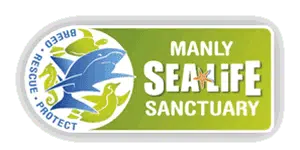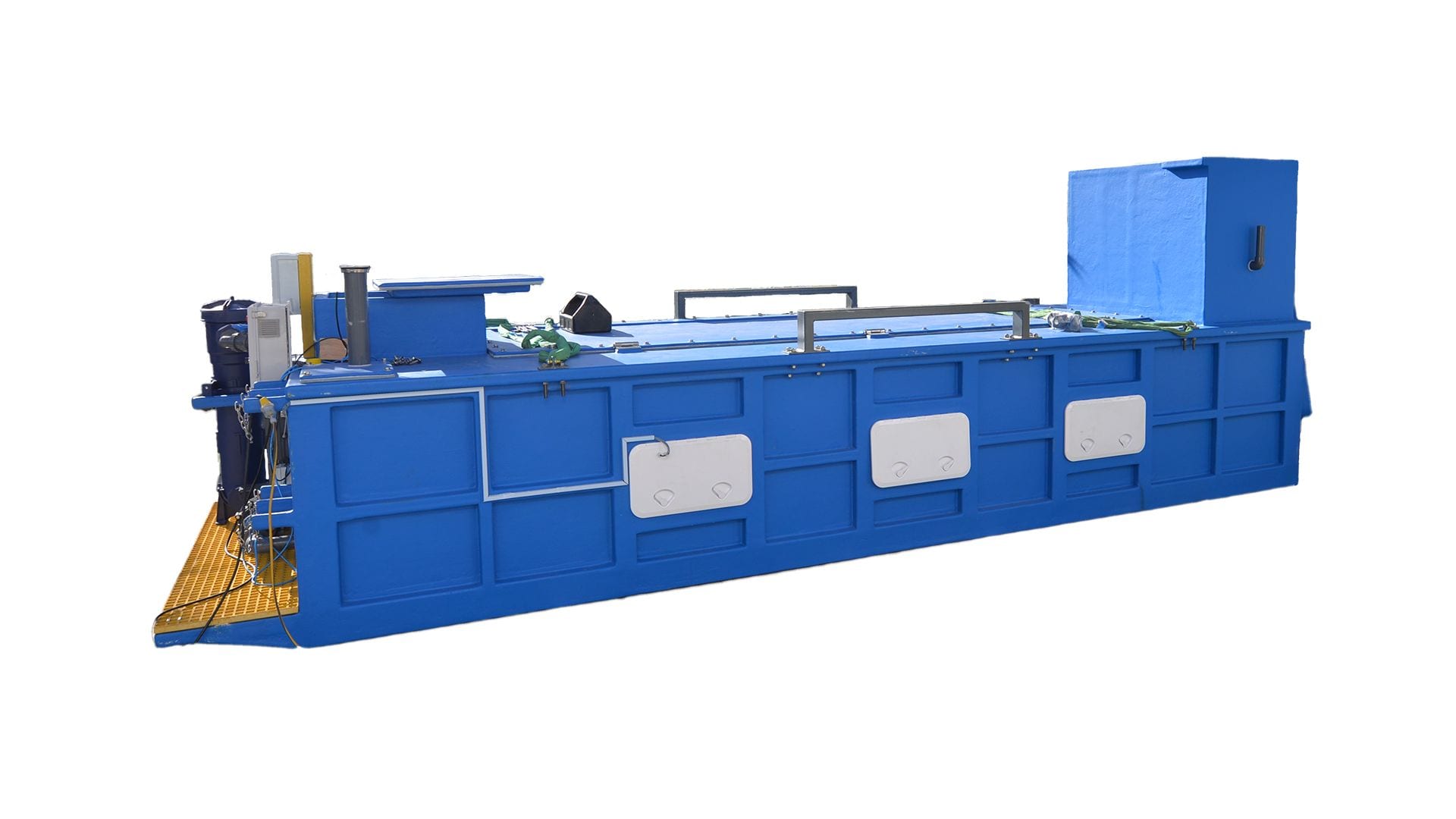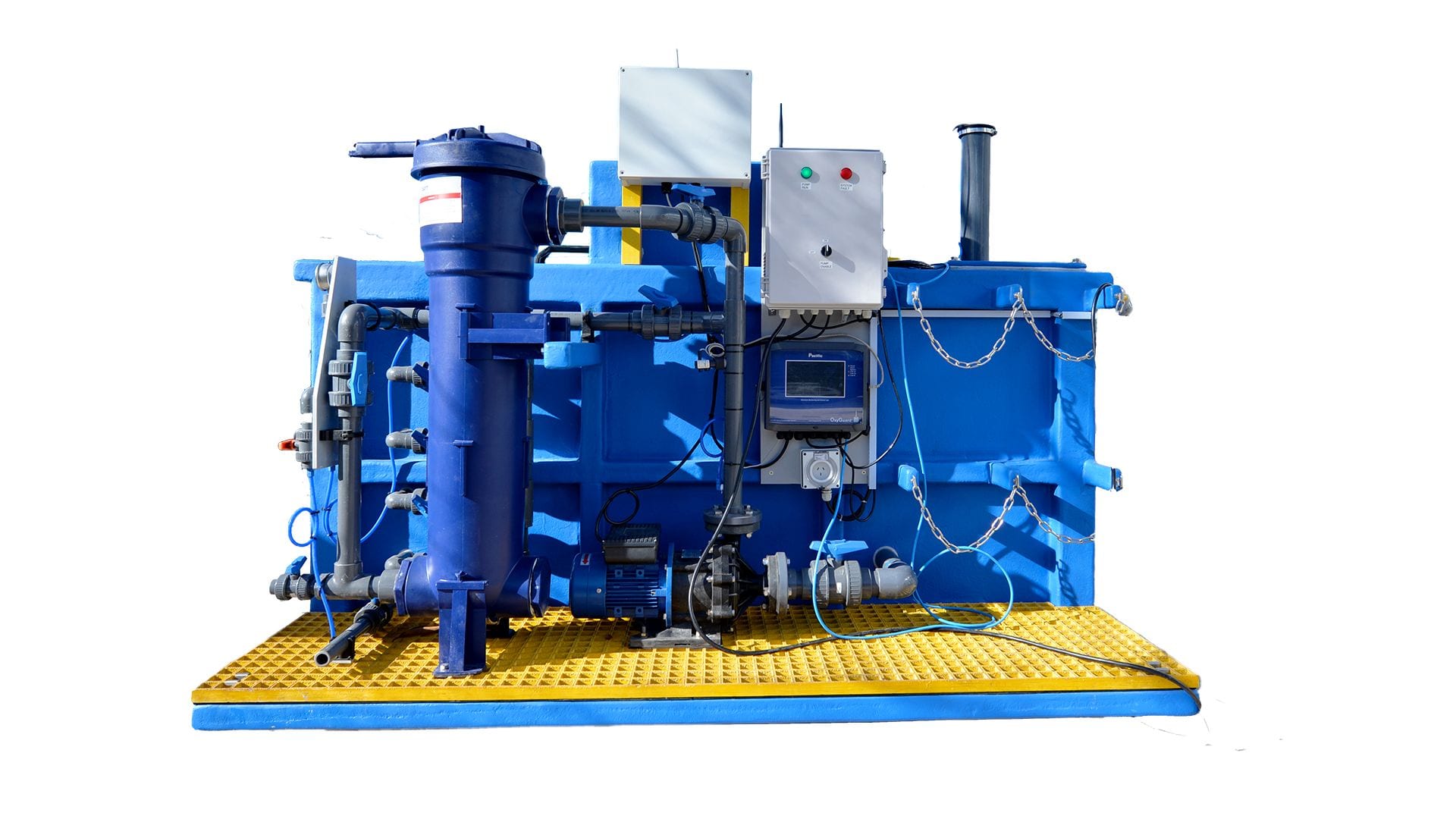The story of how AAT transported three three-meter-long grey nurse sharks to a new home far away, in a mobile home like no other.
SITUATION: THE END OF AN ERA
 After Manly Sea Life Sanctuary closed in January 2018, it relocated some 2,000 animals to new homes.
After Manly Sea Life Sanctuary closed in January 2018, it relocated some 2,000 animals to new homes.
At over 50 years of age, the venerable institution – once the third largest of its kind in the world – had become prohibitively expensive to maintain or upgrade to modern standards.
The animals residing at Manly included three enormous grey nurse sharks. A new home was found for them at the Sea Life Sunshine Coast Aquarium in Queensland.
Sea Life commissioned AAT to assist with transportation.
AAT is no stranger to the Sea Life Sunshine Coast Aquarium. Both based on Australia’s Sunshine Coast, less than 10 km separates the organisations, as the crow flies. John Langmead – AAT’s founder, owner, and Managing Director – grew up in the area and was Technical Operations Manager at the aquarium in the 1990s.
An accomplished diver, John is also remarkably familiar with grey nurse sharks – a much-misunderstood species.
The Grey Nurse Shark (Carcharias taurus) also known as the sand tiger shark or spotted ragged-tooth shark, is one of four species belonging to the family Odontaspididae. Known as the ‘Labradors of the sea’ for their leisurely swimming style, grey nurse sharks are an endangered species in Queensland1.
The animals were heavily hunted in the 50s and 70s because of their intimidating appearance as well as for their fins, flesh, and oil2.
So, when considering the best mode of transportation and tank design, AAT knew well that the precious passengers would need an exceptional vehicle.
BUILDING A MOBILE LIFE SUPPORT MACHINE
Complete with a skid-mounted, species-specific life support system and wireless digital monitoring technology, AAT’s marine animal transportation tanks are far more than sturdy tubs.
The safest way to transport three big sharks is one-at-a-time. So, a tank big enough for one animal would make three trips. Even so, these 3-meter long animals can weigh the better part of 200 kg and take up plenty of room.
AAT tanks comprise a welded steel frame with cell foam infill and fibreglass wrapping. Full of water and complete with life-support and monitoring equipment, these are mighty contraptions to behold.

Inside this tank, water is kept moving in a circular pattern with a velocity approximately equal to the ‘glide’ phase of the shark’s swim-cycle.
As it flows, a two-step process kept the water in good condition. First, a bag filter removed gross particulates and mucous. Then a degassing tower – in the tall blue box on right hand side of photo – dealt with accumulated CO2. The water was also oxygenated by injection from an oxygen bottle.

The tank’s insulation helped stabilise the water temperature.
While angular on the outside, internally the tank is oval. With the water flowing, the shark inside swims gentle at glide speed during the journey, which helps limit lactic acid accumulation in its muscle tissue. Sharks have an underdeveloped circulatory system, so they rely on movement-driven pumping of the lymphatic system to export metabolic wastes.
WIRELESS MONITORING FOR CHAPERONES
During the journey, cameras mounted inside the tank streamed live images of the shark to animal care experts travelling behind in a separate vehicle. With animal health and wellbeing, the number one priority, real-time visual monitoring was enabled vital and early detection of any issues. Dissolved-oxygen levels, water temperature and PH data was monitored throughout the journey using sensors feeding information to an iPad.
“The water was kept moving in a circular pattern with a velocity approximately equal to the shark’s normal ‘glide’ phase during its swim cycle.”
Click on the image to watch Sea Life Sunshine Coast Curator Kate Wilson interviewed by Sunshine Coast news service View News shortly after the sharks entered their new home3.
“When they came in, they just went in well…They’ve been feeding amazingly.”
Kate Wilson, Curator, Sea Life Sunshine Coast
EPILOGUE
Some years ago, Sea Life Sunshine Coast had a successful grey nurse shark breeding programme. However, the sharks were relocated to another aquarium to facilitate a facility upgrade in Mooloolaba.
At the time, transportation equipment was less sophisticated, and the sharks were not young, so it was felt best for the sharks not to subject them to a return journey. That ended the breeding programme, until now.
The three sharks transferred from Manly were two males and a female – named Pallas (F), Patches (M) and Huey (M) – so it is hoped that breeding will recommence soon.
Meanwhile, conservation group Reef Check Australia runs a citizen science research and monitoring programme for grey nurse sharks.
The organisation encourages members of the public to report opportunistic encounters and helps diver-photographers to become site custodians on research surveys.
So, check out the sharks at your local aquarium or, better still, get involved in protecting them.
Need help transporting aquarium species? Contact AAT.
RELATED NEWS COVERAGE:
Manly Sea Life Sanctuary to close after 50 years
- Channel Nine news, Dec 25, 2017
https://www.9news.com.au/national/manly-sea-life-sanctuary-to-close/f01458a6-05c1-43d5-9e6f-2d43800d6202
Manly Sea Life Sanctuary closes its doors after 55 years.
- Sydney Morning Herald, January 28, 2018.
https://www.smh.com.au/national/nsw/manly-sea-life-sanctuary-closes-its-doors-after-55-years-20180128-h0pjy4.html
New grey nurse shark at Sea Life
- 7NEWS Sunshine Coast, 9 February 2018
https://www.facebook.com/watch/?v=1728093067248120
1. https://environment.des.qld.gov.au/wildlife/threatened-species/endangered/grey-nurse-shark
2. https://www.environment.gov.au/biodiversity/threatened/publications/factsheet-grey-nurse-shark
3. https://youtu.be/OcizeBw1gFw
DISCLAIMER
The information in this article is general in nature and does not constitute professional advice and is not intended to be a substitute for such advice and should not be relied upon as such. You should consider whether the information is appropriate for your needs. The article and any associated content published are bound by the terms and conditions of use. The terms and conditions of use of AAT’s website can be found here